My approach to modelling is a little like cooking dinner. You want everything to be ready at the same time! So I try to problem solve and enable projects so that they can all be completed at some future point. Or maybe I’m just good at justifying to myself why I seldom finish anything.
One of the few areas where I so far have done very little is the accommodation of passengers. There was no road to Rewanui, so moving people up and down the hill was significant. On the other hand, train speeds were low and the journey relatively short. Perhaps this was the reason why the oldest, most eclectic, group of cars were assembled to provide the service.
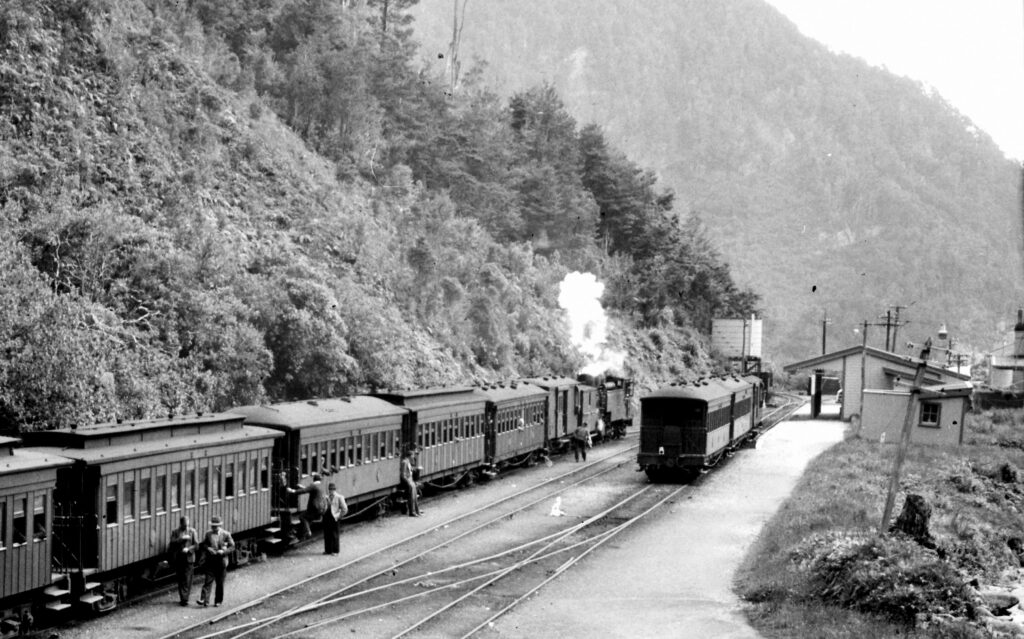
Car diversity at Rewanui in 1951. JA Terry photo.
In this blog I’ll identify around 10 cars that did (or very likely did) make the Rewanui run in my period of interest around 1940. There were more than this, but it’s not my intention to model all the cars (and it’s is unlikely I’ll manage all of those listed here). The records strongly suggest that cars were allocated specifically to the Rewanui run. It would have been important that cars had sufficient clearance for the centre rail and there is no evidence that other Westland cars popped up randomly there.
As a general rule realism is achieved by modelling the commonplace, and avoiding the oddball for the most part. Conversely there is a lot of modelling interest in the oddball, and churning out the commonplace can be tiresome. Fortunately at Rewanui, just about everything relating to passenger cars was oddball to some extent so modelling interest and realism align in this case!
There are a number of available resources for the car modeller that simplify research.
- John Agnew’s articles in NZ Railfan are an as exhaustive a primer as one could wish for. As his interest is also Westland railways, the cars I’m interested in are well represented in those articles.
- Juliet Scoble’s research notes, which cover records of build dates, work done on cars (relevant to changed appearance), allocation and so on.
- Old copies of NZR car lists that contain useful data such as allocation, seat style, lavatory configuration, lighting, relevant drawings (body/underframe/bogie), and tare weight.
- ‘Cedric Green’ drawings – primarily for car layout and the data panels.
- Drawings and photographs gleaned from many sources (and I thank and recognise those who have helped me in this).
There is a fair bit of overlap in these sources, which is useful as gaps in one are often filled by another.
My starting point for models is almost always the original workshop drawings. Where possible I’ll be sticking to that principle here, but the age and genesis of many of these vehicles is such that the original drawings are not as useful as more modern drawings, may have been lost, or simply not done in much detail due to the cars being rebuilds of even earlier vehicles. The 1940 period was not a good one for photos, so there is a fair bit of detective work and inference in deciding on exactly how the cars may have looked at the time.
The cars I’ve chosen are the following. All comments refer to the condition I plan to model for the 1940 period:
A40
This is a 43′ BP 91 all second 2 compartment car with elevated (clerestory) roof. As far as I can tell the elliptical mouldings had been removed, but vertical mouldings retained. Siding is from wide panels (kauri), with no sign of T&G. A centre lavatory was fitted. The longitudinal seating is all second class. There is good evidence, including photos, that this was a Rewanui car.
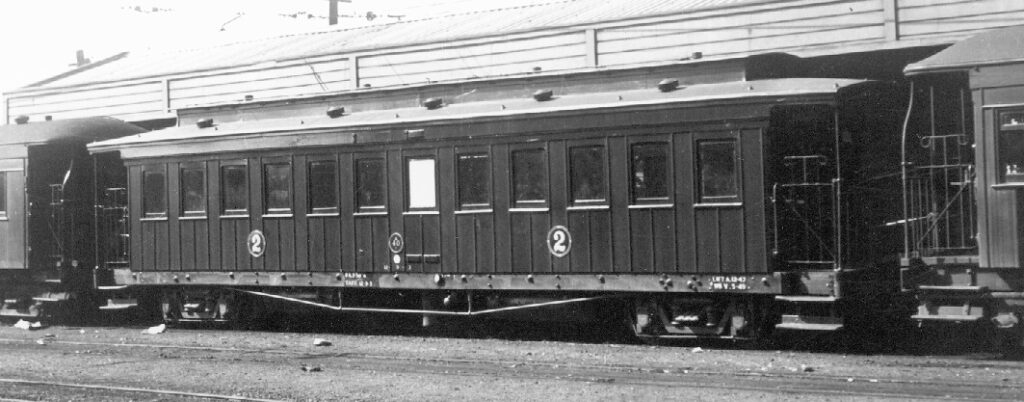
A40 in 1950. Photo from the John Agnew article in NZ Railfan.
A112
BP879 44′ car with elevated roof of 1887. Two compartment all second with centre entry. Rebuilt from 2 6-wheel C cars. An attractive and unusual car.
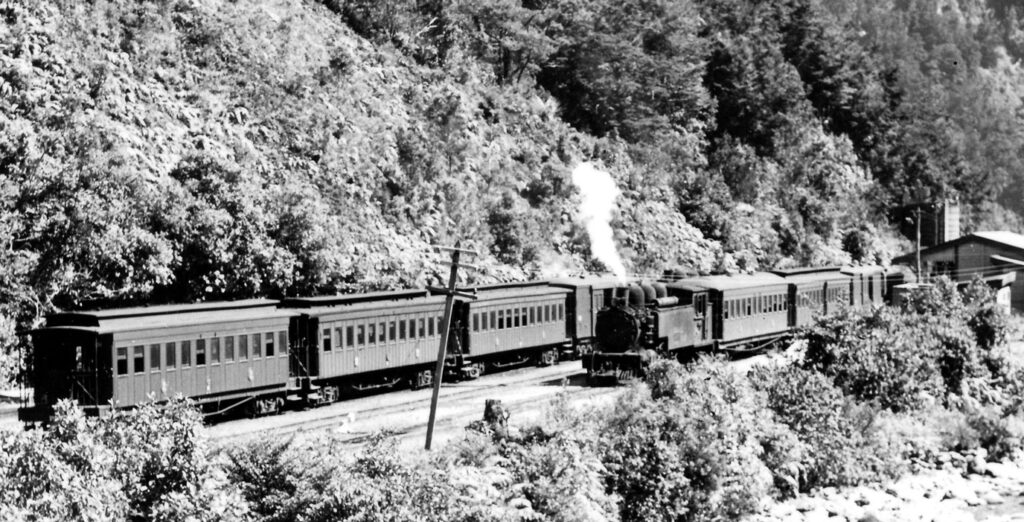
Cars in Rewanui yard, 1949. A112 is the second car behind the We locomotive. Crop from a Les Hostick photo.
A161
43′ clerestory roofed car with 2 second class, longitudinal seated, compartments of 1887. Another BP91 car, that will be different in detail to A40 in having the original mouldings, more vertical tie rods to the roof, and an end lavatory. Illustrated in the photo below.
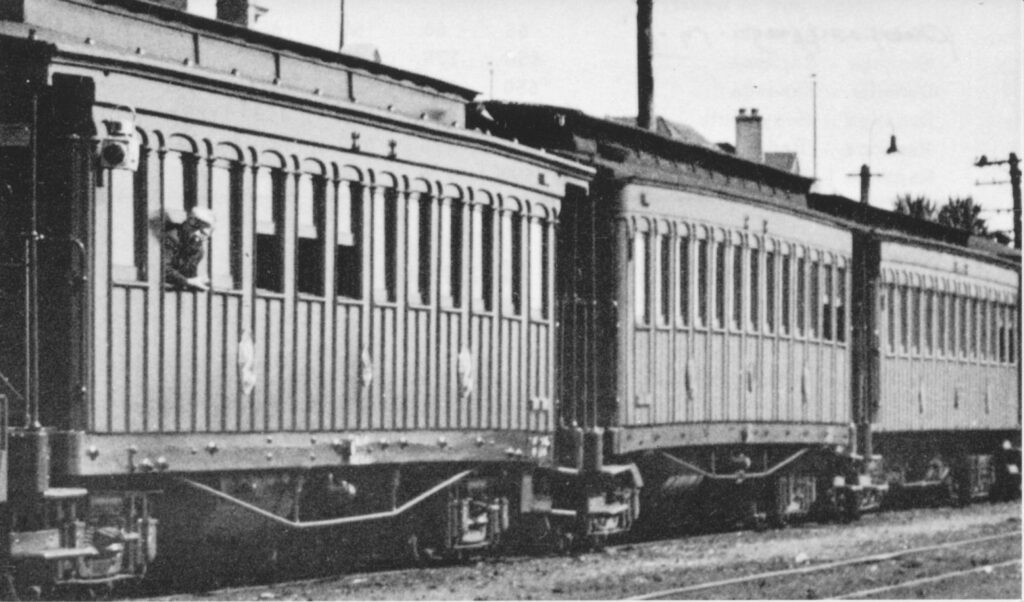
This image is a crop of a larger 1940 photo showing We377 with a train at Riverside likely bound for Rewanui. The first car is a BP91 43′ car with an end lavatory. This is probably A161 as it was the only end lavatory BP91 in Westland at the time. The second car is a Gilbert Bush car (with end lavatory, and thus A256), while the third is a BP496 car still with elliptical mouldings. (JW Sutherland photo)
A203
A BP2275 44′ car of 1898. A common design of car with the ‘turtleback’ round roof lacking the design whimsy of the earlier cars. In the ‘Rewanui 1940’ context, a rare ‘modern’ car. Two compartment composite (in 1940) fitted with chairs rather than longitudinal seats. The only ‘1’ class plate likely to appear on the branch with any authenticity.
A214
A 43′ BP91 car of 1887. Two compartment all second with longitudinal seating and a centre lavatory. Fitted with a BP2275 round roof. T&G siding with vertical mouldings only, no end windows.
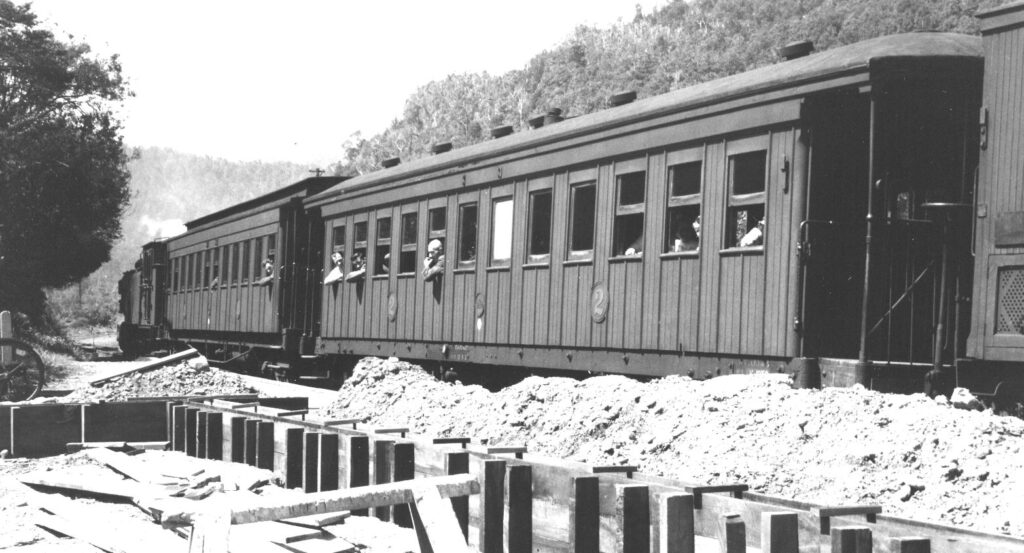
Hugh Bennett photo showing A214 passing through Dunollie.
A256
42′ 6″ clerestory, single compartment with end lavatory car of 1879. Built by Gilbert Bush in the USA. These cars had 13 windows (compared to 12 for the BP91) and a wide clerestory. Information on these cars is rather scant, but they served as inspiration for the BP91 cars and were superficially similar to them. A256 was the last Westland Gilbert Bush car and only just makes this list as it was written off in November 1940.
A267
44′ elevated roof car to BP496 of 1888. The BP 496 was a small class NZ wide, but there were 3 on the Rewanui run. A267 was a 2 compartment all second with longitudinal seating and no lavatory. This car is the first car fully in frame in the 1951 JAT photo at the top of the post
A269
Very similar to A267, but single compartment. This car is the first car mostly out of frame in the 1951 JAT photo at top, but showing different moulding treatment to A267. I like the idea of modelling A267 and A269 as they are charecteristic Rewanui cars and will inject a little uniformity into an otherwise diverse fleet, while still having subtly varying features. While I’m leaning towrd modelling them as shown in the 1951 image, the 1940 picture suggests that at least one BP496 car still had elliptical mouldings at that time.
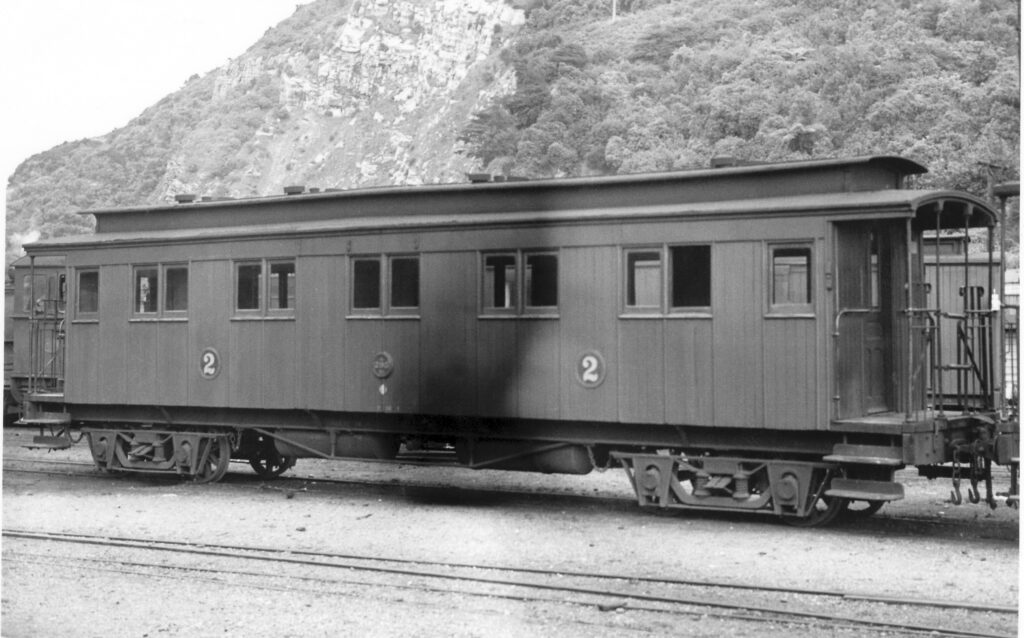
A295 in 1948. JA Terry photo.
A295
BP 1128A 39’6″ clerestory roofed car of 1898. Rebuilt from 2 D class 4-wheel cars. Utilitarian in appearance compared to A112.
A522
BP1703 44′ clerestory car of 1896. All second, 2 compartment with longitudinal seats and no lavatory. T&G sides with vertical mouldings. This is my ‘commonplace’ car, though it will be unique in this setting. It will be the easiest to achieve as I scratchbuilt it many years ago. It just needs a facelift and new plates. Technically the clerestory sides should probably be blanked off, but I probably won’t be able to bring myself to do that to a competition winning model. A522 is a documented Rewanui car, and is likely to have been so in 1940.

A close up of the platform of of my BP1703 car that will assume A522’s identity.
A416/A420
35’ Birdcage car. These two character cars are a favourite and I have one largely scratchbuilt. They were long term Westland cars and were certainly there in 1940. While I have no evidence that they made the Rewanui run, it may be too great a temptation to pass up.
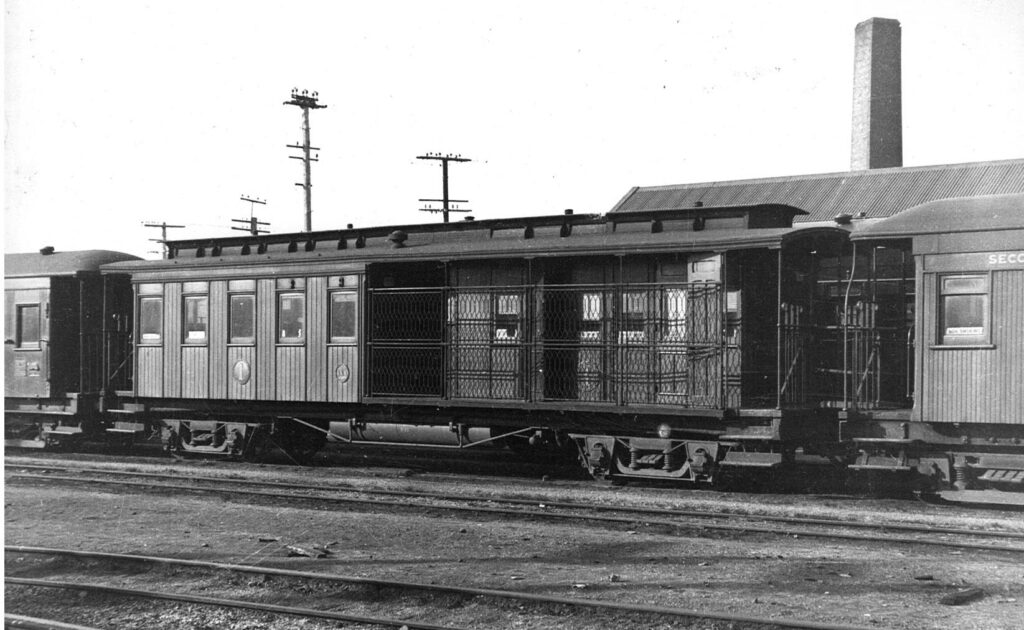
A 35′ birdcage car at Greymouth (details unknown)
Some of the outcomes of these blog posts are the comments and criticisms from readers. Keep them coming. Any corrections or additional information on this subject would be most welcome.















